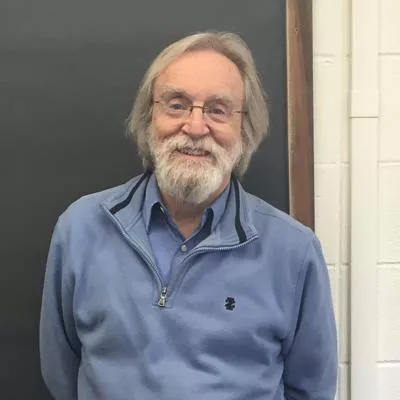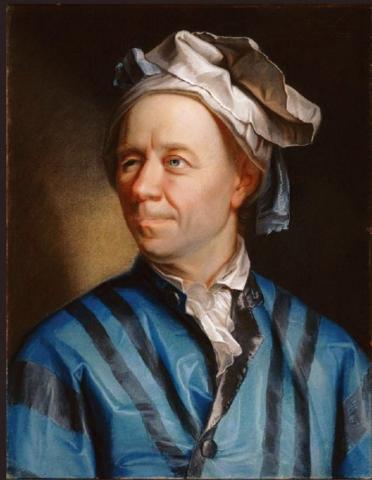Bridging History and Math
Bill Dunham uncovers a bit of Bryn Mawr lore.
“Read Euler, read Euler, he is the master of us all!” urged the French scientist/mathematician Pierre-Simon Laplace.
Few have taken this quote closer to heart than Professor William (Bill) Dunham. A math professor and historian, Dunham is one of the world’s leading experts on the Swiss mathematician, Leonhard Euler (1707–1783).
Over the past 30 years, Dunham has written award-winning books, lectured across the world, and taught at respected colleges and universities (Harvard, Princeton, Penn, Cornell). Most recently, he accepted a research associate position at Bryn Mawr. Like the mathematicians he studies, Dunham has a compelling story of his own.
As an undergraduate at the University of Pittsburgh, Dunham had a hard time choosing between history and math. After settling on the latter, he went on to study topology at Ohio State, where he obtained his Ph.D. in 1974. Around the same time, he attended a number theory seminar where he met fellow mathematician and future wife Penny Higgins Dunham. “It was a very romantic experience,” he recalls.
Even with his academic career well under way, he found there was something missing. "I never abandoned my love of history,” he says. “In particular, I wanted to know how mathematics got started, where it came from, and what it looked like two hundred—or two thousand—years ago.”
He started reading the original works of his favorite mathematicians, and soon he was writing articles that reinvigorated their beautiful proofs. This all lead to his first book Journey Through Genius: The Great Theorems of Mathematics, and the rest is history.
He accepted a position at Muhlenberg College that allowed him to teach math and its history. Penny accepted a position a year later, and for 20 years, they happily taught math together. Over those years, he wrote five more books, received awards in teaching and writing, and formed lasting relationships with the Muhlenberg community.
Shifting his entire career toward math history was frightening, Dunham says. “But sometimes when you’re given an opportunity, you just have to take it! There’s this great quote from Graham Bell that comes to mind: ‘Leave the beaten track occasionally and dive into the woods.’ ”
Soon after the Dunhams retired from Muhlenberg, they took research associate positions at Bryn Mawr. True to character, Dunham got to work on a new project: Bryn Mawr’s relationship with the English mathematician and philosopher Lord Bertrand Russell, who was husband to two Bryn Mawr alumnae—Alys Pearsall Smith (Class of 1890), his first wife, and Edith Finch ’22, his fourth and last.
Dunham uncovered an animated narrative between the rambunctious Russell and the faculty at Bryn Mawr—most notably, a series of geometry lectures, in which Russell slipped in an extra talk on “Socialism, the Consummation of Individual Liberty.” Dunham first presented these findings to the Distressing Math Collective seminar at Bryn Mawr. The story was later published in the Mathematical Intelligencer.
Most recently, Dunham taught a course at Bryn Mawr, exploring great discoveries and the mathematicians that go with them (Archimedes, Newton, Euler, and Gauss, to name a few). Although he is enjoying his retirement, he hopes to teach here again.
Published on: 12/18/2017


